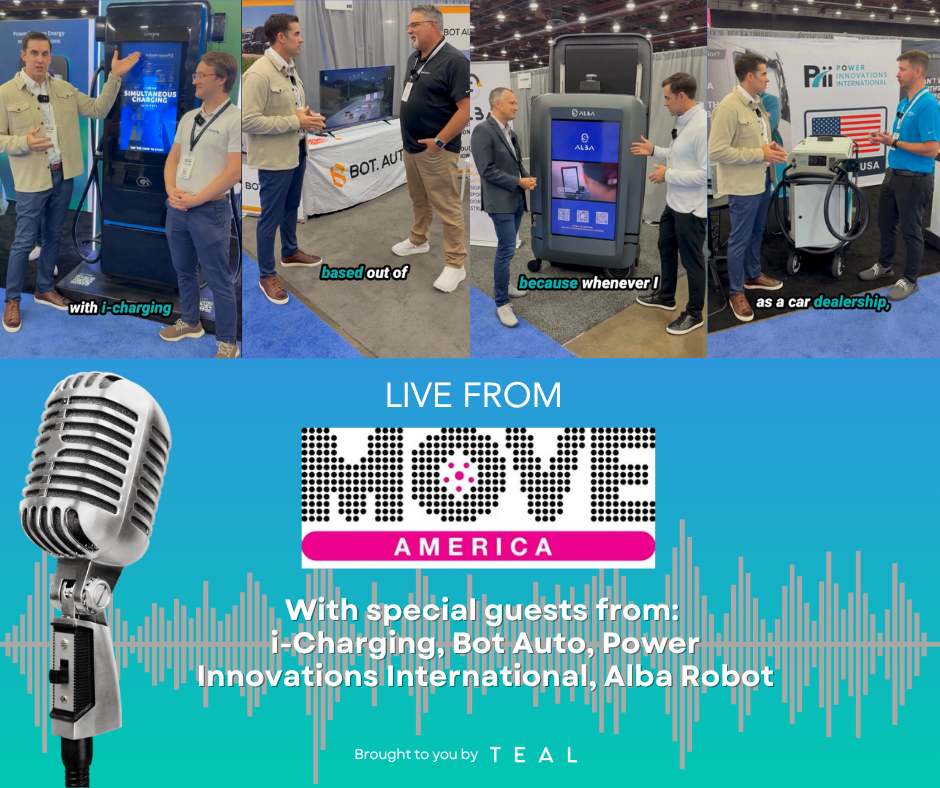Cellular Connectivity: The Nervous System of Physical AI

The robots are coming and they need to stay connected!
Physical AI represents a fundamental shift from software-only artificial intelligence to embodied systems that can sense, learn, and act in the real world. These aren’t chatbots or recommendation engines confined to screens. They’re autonomous delivery robots navigating city streets, humanoid assistants working in warehouses, and inspection drones monitoring critical infrastructure across remote locations.
But here’s the challenge: as Physical AI systems move beyond controlled lab environments into the unpredictable real world, they face a critical dependency that often gets overlooked. They need reliable, always-on connectivity to function effectively at scale. Without it, even the most sophisticated autonomous systems become isolated islands, unable to access cloud computing resources, receive critical updates, or coordinate with fleet management systems.
This connectivity gap isn’t just a technical hurdle, it’s the difference between Physical AI remaining an expensive experiment and becoming a transformative force across industries. The solution lies in robust cellular connectivity that acts as the nervous system for these intelligent machines.
What Is Physical AI?
Physical AI is intelligence with a body. Examples include robots, drones, and autonomous machines that combine artificial intelligence with physical embodiment to interact with the real world. Unlike traditional software AI that processes information and generates digital outputs, Physical AI systems can perceive their environment, make decisions, and take physical actions.
The key distinguishing features of Physical AI include:
Embodiment: These systems have physical forms, robotic arms, wheeled platforms, humanoid bodies, or aerial vehicles that allow them to manipulate and navigate the physical world.
Integrated Perception and Action: Physical AI combines multiple sensing modalities like computer vision, lidar, tactile sensors, and audio processing with decision-making algorithms and motor control systems to operate in complex environments.
Real-World Learning: Rather than training solely on datasets or simulations, Physical AI systems continuously learn from direct interactions with their physical environment, adapting to new situations and improving performance over time.
Autonomous Operation: These systems can operate independently in dynamic, unpredictable conditions, making real-time decisions without constant human oversight.
The Explosive Growth of Physical AI

The Physical AI market is experiencing unprecedented growth, driven by advances in AI algorithms, decreasing hardware costs, and increasing demand for automation across industries.
The numbers tell a compelling story. The AI in robotics market reached $12.8 billion in 2023 and is projected to soar to nearly $125 billion by 2030, representing a remarkable 38% compound annual growth rate. The broader robotics sector shows similar momentum, expanding from $71 billion in 2023 to an estimated $200 billion by 2030.
Even more striking is the long-term potential. Morgan Stanley estimates that humanoid robots alone could become a $5 trillion market by 2050, with potentially 1 billion humanoids deployed globally. A Citi GPS report predicts 1.3 billion AI robots in use by 2035, scaling to 4 billion by 2050.
This growth extends beyond hardware sales. The Robots-as-a-Service (RaaS) model is already a $2 billion market growing at 17% annually, making advanced robotics accessible to companies that want automation benefits without massive upfront investments.
Industry leaders are taking notice. Nvidia recently called robotics and Physical AI a multitrillion-dollar opportunity, launching specialized hardware and models for autonomous machines. Investors like Vinod Khosla predict a “ChatGPT moment for robotics” within the next few years, where humanoids become affordable enough for everyday use at around $300-400 per month for household assistance.
Real-World Examples of Physical AI
Physical AI systems are already transforming industries across the globe, demonstrating the practical value of embodied intelligence.
Autonomous Delivery Robots like those from Starship Technologies and Serve Robotics navigate sidewalks and cross streets to deliver food and packages directly to customers. These systems combine computer vision, GPS navigation, and obstacle avoidance to operate safely in urban environments. Find out how Starship keeps their robots reliably connected to the best cellular networks with TEAL’s Network Orchestration Service: Starship Technologies – Cellular IoT Connectivity | True eSIM From TEAL
Humanoid Robots from companies like Boston Dynamics and Figure AI are moving beyond impressive demonstrations to practical applications. These systems can perform complex manipulation tasks, navigate stairs, and work alongside humans in warehouses and manufacturing facilities.
Industrial Inspection Drones equipped with AI-powered vision systems can autonomously inspect power lines, wind turbines, and oil pipelines, identifying potential issues that might be missed by human inspectors while accessing dangerous or hard-to-reach locations.
Healthcare Assistance Robots are being deployed in hospitals and eldercare facilities to assist with patient care, medication delivery, and mobility support. These systems combine AI decision-making with gentle manipulation capabilities designed for safe human interaction.
Agricultural Robots use computer vision and machine learning to identify and selectively harvest crops, apply pesticides with precision, and monitor plant health across large farms, increasing efficiency while reducing chemical usage.
Why Physical AI Needs a Cellular Nervous System
The most sophisticated Physical AI system is only as capable as its ability to stay connected. Cellular connectivity serves as the nervous system that enables these intelligent machines to operate reliably at scale.
Always-On Data Exchange: Physical AI systems constantly exchange critical information such as high-definition maps, sensor data streams, software updates, and mission commands. Cellular networks provide the persistent, reliable connection these systems need to function outside controlled environments where Wi-Fi might be unavailable or unreliable.
Cloud Computing Integration: Many AI workloads are computationally intensive. Cellular connectivity allows Physical AI systems to offload complex processing tasks to cloud-based resources, enabling more sophisticated AI capabilities while keeping onboard hardware costs manageable. This is particularly important for computer vision processing and real-time decision-making in complex environments.
Safety and Compliance: When autonomous systems encounter unexpected situations, cellular connectivity enables remote monitoring and intervention. Operators can send emergency stop commands, provide manual guidance, or reroute systems around obstacles. Regulatory bodies increasingly require this level of oversight for autonomous systems operating in public spaces.
Fleet Orchestration: As Physical AI deployments scale from single units to large fleets, centralized coordination becomes essential. Cellular networks enable real-time fleet management, coordinating thousands of robots across cities, optimizing routes, balancing workloads, and ensuring efficient resource utilization.
Global Scalability: Modern cellular technologies like eSIM and global roaming capabilities allow Physical AI systems to operate seamlessly across geographic boundaries without hardware changes. This is crucial for applications like autonomous delivery, inspection services, and agricultural monitoring that may span multiple regions or countries.
The 5G Advantage for Physical AI
Fifth-generation cellular networks offer specific advantages that make them ideal for Physical AI applications.
Ultra-Low Latency: 5G networks can achieve latency as low as 1-5 milliseconds, enabling real-time decision-making for high-speed applications like autonomous vehicles and precision manufacturing robots. This near-instantaneous communication is crucial for safety-critical applications.
Network Slicing: 5G allows operators to create dedicated network segments with guaranteed performance characteristics. Physical AI applications can receive priority bandwidth and reliability assurances, ensuring consistent performance even during peak network usage.
Massive Device Connectivity: 5G networks can support up to 1 million connected devices per square kilometer, accommodating dense deployments of Physical AI systems in urban environments, smart factories, and automated warehouses.
Enhanced Coverage: Advanced 5G implementations provide better coverage in challenging environments like underground facilities, dense urban areas, and remote locations where Physical AI systems often operate.
TEAL: The Connectivity Solution for Physical AI
At TEAL, we understand that reliable connectivity is the foundation of successful Physical AI deployment. Our Network Orchestration Service (NOS) provides the tools and infrastructure that robotics innovators need to manage cellular connectivity seamlessly across their fleets.
Our solution addresses the unique connectivity challenges facing Physical AI systems:
Global Network Management: We provide unified management of cellular connections across multiple carriers and countries, ensuring your Physical AI systems stay connected regardless of location. Our wholly owned and patented eSIM technology eliminates the need for physical SIM card changes when systems cross geographic boundaries.
Intelligent Routing: Our platform automatically selects the best available cellular network based on signal strength, latency, and cost considerations, optimizing performance while minimizing connectivity expenses. Easily switch between global networks over-the-air to ensure consistent uptime and avoid outages and dead zones.
Real-Time Monitoring: Track the connectivity status, data usage, and performance metrics of your entire Physical AI fleet through our comprehensive dashboard. Identify and resolve connectivity issues before they impact operations.
Scalable Infrastructure: Whether you’re deploying ten robots or ten thousand, our platform scales to meet your needs without requiring additional infrastructure investment or management overhead.
Security First: We implement enterprise-grade security protocols to encrypt and protect the data flowing between your Physical AI systems and cloud infrastructure, ensuring compliance with industry regulations and protecting against cyber threats.
Take the Next Step with TEAL
The age of Physical AI is here, but connectivity will determine how far and how fast it advances. Don’t let connectivity challenges limit the potential of your autonomous systems.
Our team of connectivity experts understands the unique requirements of Physical AI applications. We’ve helped robotics companies, drone operators, and autonomous vehicle developers overcome connectivity hurdles and scale their operations successfully.
Ready to give your Physical AI systems the nervous system they need? Book a free consultation with a TEAL expert today. We’ll analyze your specific connectivity requirements and design a solution that keeps your intelligent machines connected, coordinated, and operating at peak performance.
Your Physical AI systems have the intelligence and capability to transform your industry. Let TEAL provide the connectivity foundation that makes it possible.
Book a Meeting Now!
Recent Posts
Innovations in Motion: Exclusive Interviews from MOVE America in Detroit
Teal Communications Staff2025-10-16T17:07:05+00:00
Why Physical AI Systems Fail Without Reliable Connectivity
Teal Communications Staff2025-10-07T23:19:27+00:00
See the Future of Connectivity at MWC Las Vegas
Teal Communications Staff2025-09-30T14:19:04+00:00




